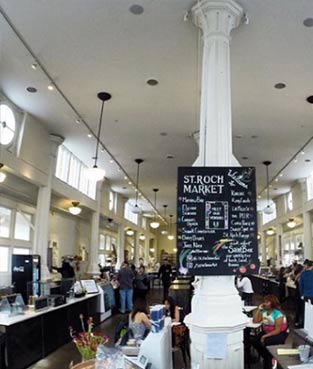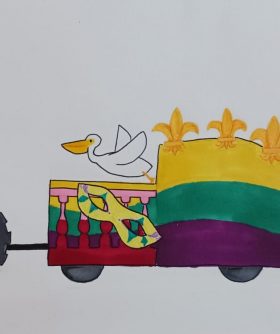Learn about Life in Old Louisiana
Authentically restored antebellum mansions await your discovery just a few minutes from New Orleans, each with its own unique story to tell. Learn what life was like for both the owners and the enslaved people who lived here before the Civil War–before our nation was truly the land of the free. While a day trip is easy, consider spending the night at the beautiful Inn at Houmas House. For more information on our grand estates and their history, see below.
-
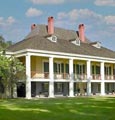
Just 10 minutes from the New Orleans airport is Destrehan Plantation, where costumed storytellers will take you back in time with stories of the families who lived here, both free and enslaved. Highlights include folklife demonstrations, an exhibit on the 1811 Slave Revolt at the Miller-Haydel Museum in a former slave cabin, and an original document signed by Thomas Jefferson. The gift shop features handmade items from local artisans. Proceeds from all tours go to the restoration of Destrehan Plantation. Learn more about their nightly Haunted Plantation Tour. BOOK NOW
-

Get a taste of life in the South, both figuratively and literally, on this 4.5 hour experience at Destrehan Plantation. This combination tour includes the Experience Life at Destrehan Plantation Tour along with a cooking demonstration from Maitland "Spuddy” Faucheux, owner of Spuddy's Cajun Foods and Cajun Cooking Experience. It includes an authentic Cajun lunch or dinner in the historic mule barn. The tour must be booked 30 days in advance & requires a minimum of 35 participants. Learn More
-
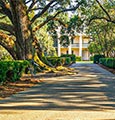
Livery Tours Private Vehicle Mansion Tour
This private tour to Grand Estates Country might just be the most memorable five hours you spend in Louisiana. While you can customize your stops, the tour typically includes visits to Laura and Oak Alley, two of Louisiana’s most beautiful and fascinating Big Houses. Along the way, your guide will answer your questions about the swamplands, crops, and small towns you pass, and give you some historical background on topics such as the Code Noir and the difference between Cajun and Creole.
-
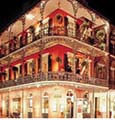
Feel the gentle breeze of Southern hospitality on a tour back to the Antebellum South! Gray Line New Orleans, the world's leader in sightseeing, has been showcasing New Orleans to visitors from around the world since 1924. Hop on, and enjoy touring New Orleans' many beautiful and interesting attractions.
Book Oak Alley Estate TourBook Laura Estate tourBOOK Whitney Estate Tour
-
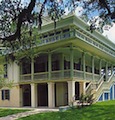
Spend the day on historic River Road with tours of Laura, San Francisco, or Oak Alley, or combine a plantation tour with one of Cajun Pride's swamp or city tours for a fascinating and insightful Louisiana experience.
-
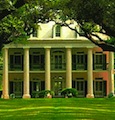
Tour two mansions in one day! Visit beautiful Laura Plantation and magnificent Oak Alley, including an exploration of Oak Alley's main house and surrounding buildings.
BOOK YOUR TOUR NOW
-
.jpg)
One of the most famous historic homes on Louisiana’s Old River Road is Houmas House. Come tour the house and stroll the magnificent gardens. More than a museum, Houmas House is alive with the joys of country living. Discover for yourself why USA Today ranked Houmas House the No. 2 Historic Home Tour in the country.
Book Your Tour Now
Louisiana Antebellum Culture
To look away from the Old South is not the answer. To truly understand American history is to know what life was like for both the owners of the “Big Houses” and the enslaved workforce who made them prosperous. Most of the most storied antebellum estates have adapted their tours to tell “the whole story.” The truth is just a short drive from New Orleans. Come discover it.
The Great River Road and beyond
Many of the estates closest to New Orleans are along the River Road corridor, a stretch of land that runs for nearly seventy miles along the Mississippi. Beginning with Oak Alley in 1925, the “Big Houses” on River Road began to be restored. In recent years, programs have been put in place to allow visitors to hear the whole story of life in the Old South–not just the glamorized Hollywood version.
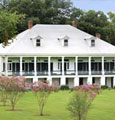 St. Joseph Plantation
St. Joseph Plantation
Circa, 1830, St. Joseph, has been family owned since 1877 and is one of the few fully intact sugar cane plantations in the River Parishes. Composed of 2,500 acres (including its "sister" property, Felicité), St. Joseph stretches back from the Mississippi River as far as the eye can see. Take a walk through time as you enjoy a fascinating glimpse into the lives of the many interesting people who have called St. Joseph home. Many tours are guided by family members themselves.
Destrehan, built by Jean Noel Destrehan in 1787, is the oldest documented plantation house left intact in the lower Mississippi Valley. It was here that the process of producing granulated sugar was perfected, helping to establish sugar cane as the major crop of the area, replacing indigo. Today, the house is open for guided tours that highlight the lives of the people who lived and worked here. In one of the rooms, the walls and ceiling are unfinished, giving a glimpse into building methods of days gone by.
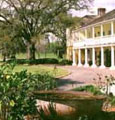 Ormond Plantation
Ormond Plantation
Ormond, built in the late 1700s, claims to be the oldest French West Indies-style plantation in the lower Mississippi valley. It began as a farm for indigo but later switched to the more profitable sugar cane crop. Originally acquired as a French land grant, Ormond stretched from the Mississippi River to Lake Pontchartrain. It provided makeshift housing for troops heading to the Battle of New Orleans and was a prize to be captured during the Civil War. Today the estate is but a mere 16 acres but is restored, as closely as possible, to the way it was during its prime.
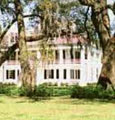 Houmas House
Houmas House
One of the most visited antebellum homes near New Orleans is Houmas House, ranked the No. 2 Historic Home Tour in the country by USA Today. Houmas House was built in 1840 by Col. John Smith Preston, on land originally owned by the Houmas Indians, hence the name. In 1858 the house and 12,000 acres were sold to Irishman John Burnside, one of the nation’s leading sugar producers. To this day, the home is sometimes referred to as the "Burnside House." It was used as the filming location for the film "Hush, Hush, Sweet Charlotte," starring Bette Davis. The gardens are absolutely lovely here year-round.
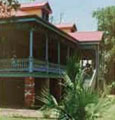 Laura
Laura
Laura was built in the French "Creole" style, rather than in the style of the English or American antebellum homes common throughout the area. While it has the wide veranda that most homes of its kind had, the ceilings were not quite as high, and the architectural style is noticeably different. Upon entering, you see a sign that proclaims Laura to be "The American Home of Br'er Rabbit.” In 1871, Alcee Fortier wrote down the stories he heard the enslaved workers pass down to their children in Creole French.
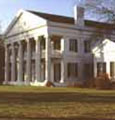 Madewood
Madewood
This Greek Revival mansion on Bayou Lafourche was built by Irish-American Henry Howard, in 1846 for sugar baron Colonel Thomas Pugh and his wife Eliza. Nestled among moss-draped oaks, on acres of quiet land, few places are more peaceful than Madewood. As a bonus, there is a very old family graveyard on the grounds. Open up the creaking gate, and discover tombs and headstones of those who called Madewood home so many years ago.
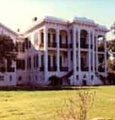 Nottoway
Nottoway
The largest of the “Big Houses” remaining in Louisiana is Nottoway, built in 1857 by John Hampden Randolph who amassed a great fortune in sugar. The house has 50 rooms, which were certainly needed, as John Randolph had 11 children. Inside, one cannot escape the beauty and elegance of its famous White Ballroom, once the site of balls that would go on late into the night. It is said that Nottoway was the first on River Road to have a bathroom on the second floor.
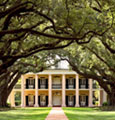 Oak Alley
Oak Alley
This Greek Revival home is supported by 28 columns, each is 8 feet in circumference, with 15-foot high ceilings and 16-inch thick brick walls. The 13-foot wide veranda surrounds the house on all four sides, offering a splendid view, and ample shade and protection from the sun or rain. From the main entrance, two rows of 14 magnificent oak trees (now 250 years old) line the walk to the Mississippi River, a quarter mile away, hence the name "Oak Alley.”








.jpg)
 St. Joseph Plantation
St. Joseph Plantation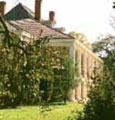
 Ormond Plantation
Ormond Plantation Houmas House
Houmas House  Laura
Laura  Madewood
Madewood  Nottoway
Nottoway  Oak Alley
Oak Alley